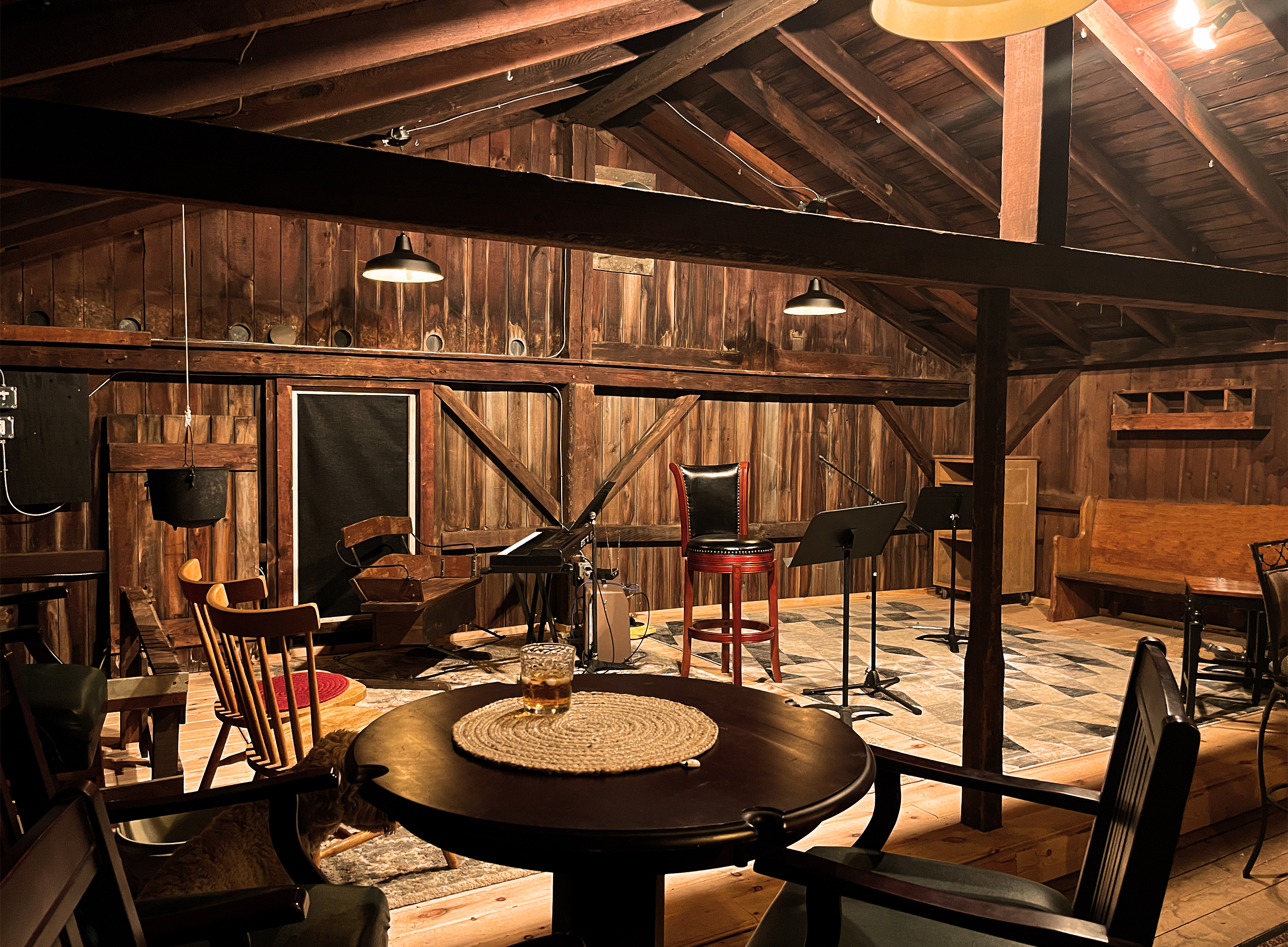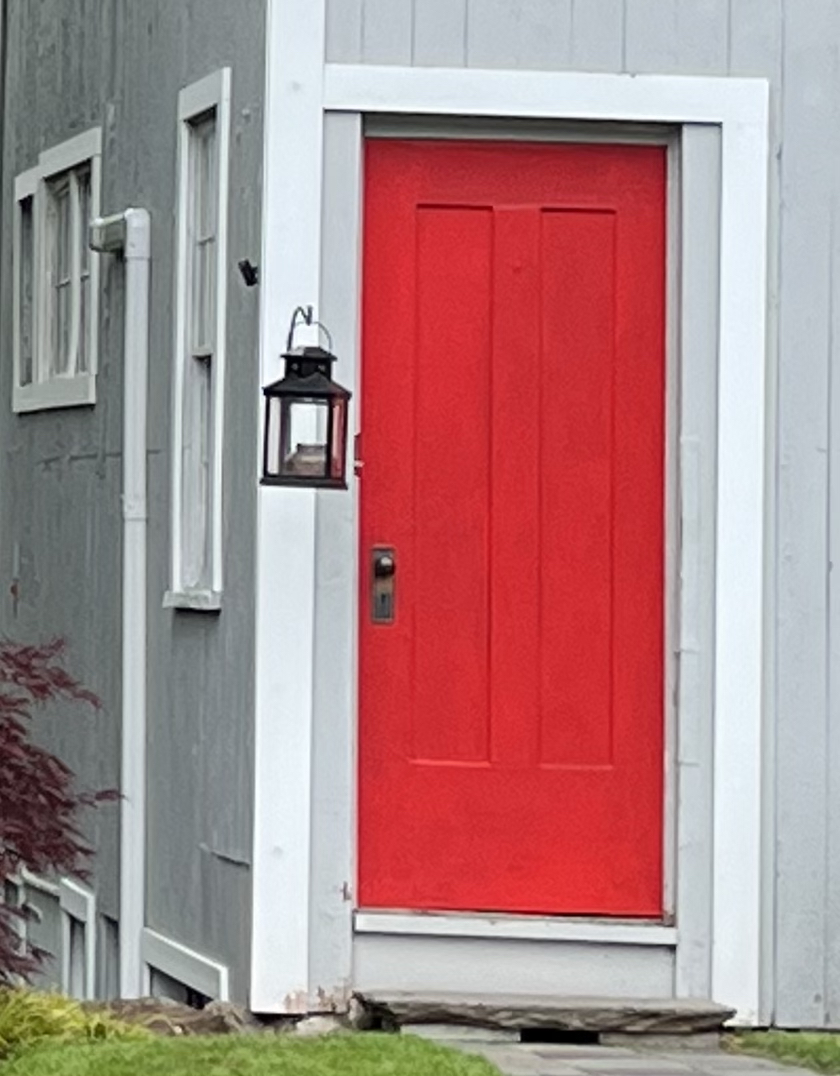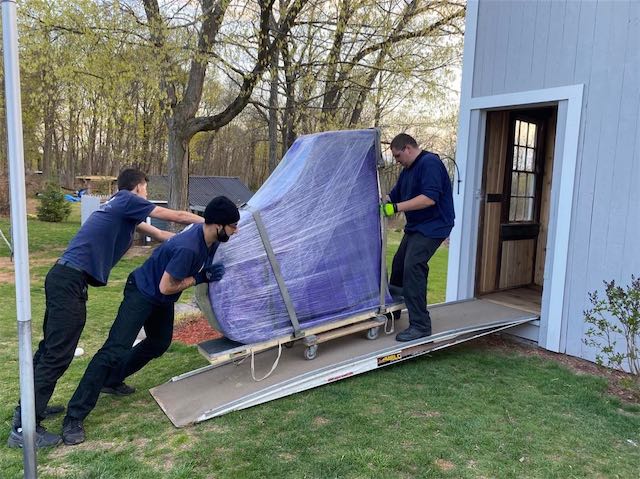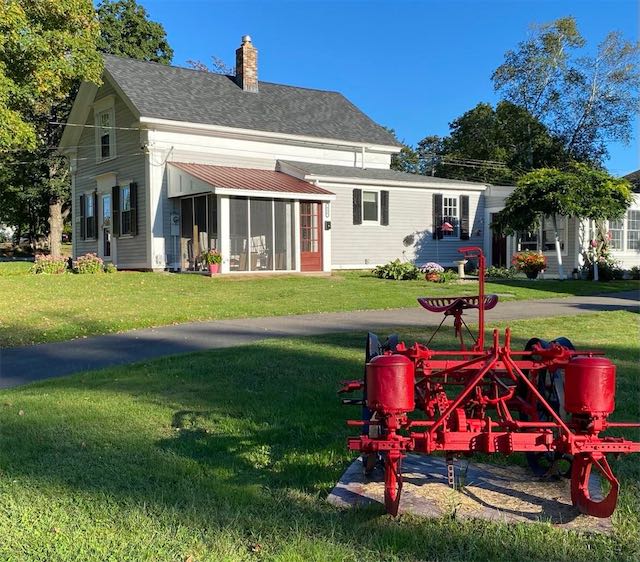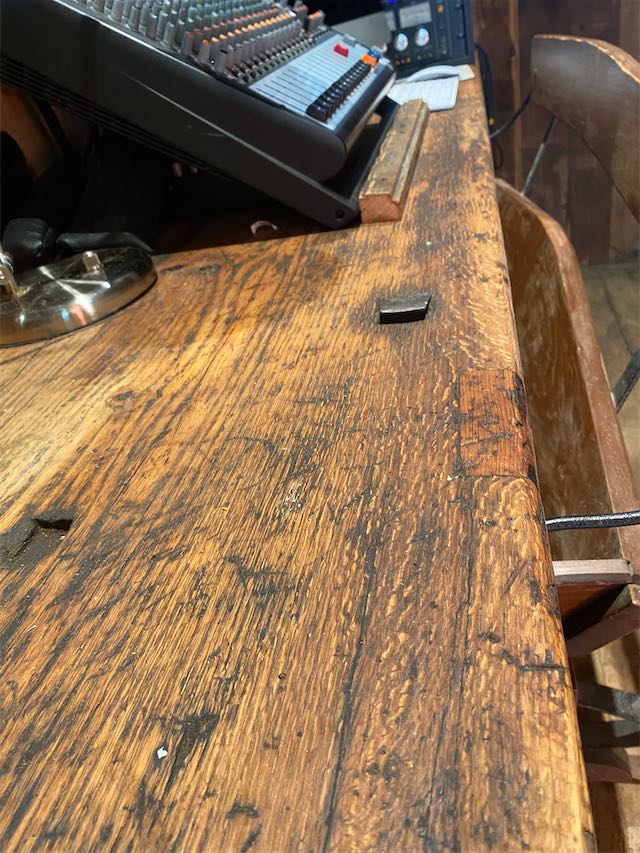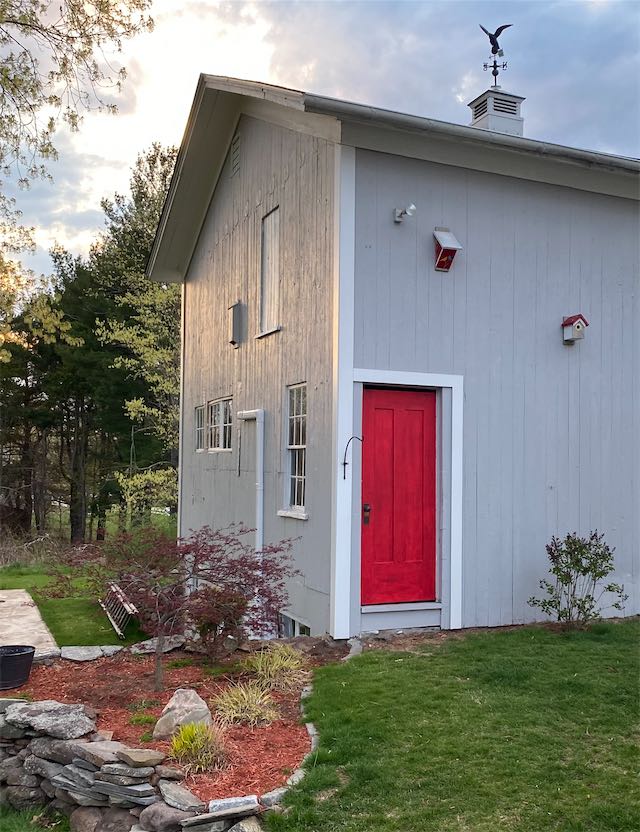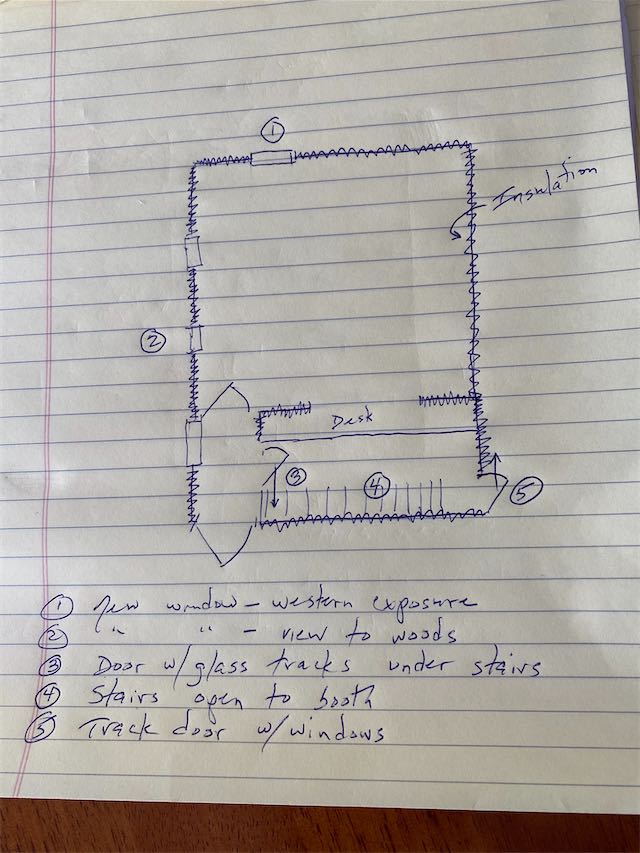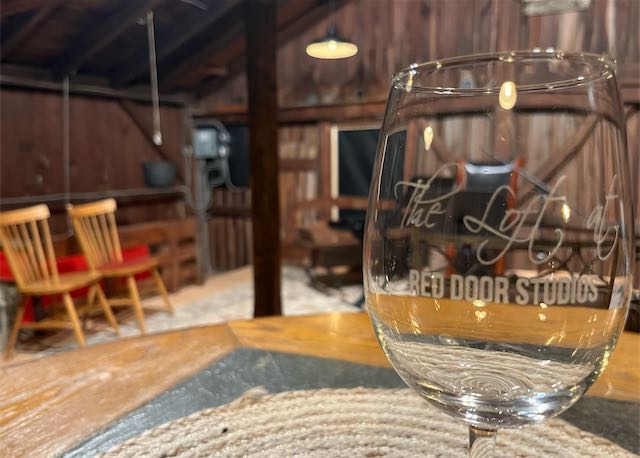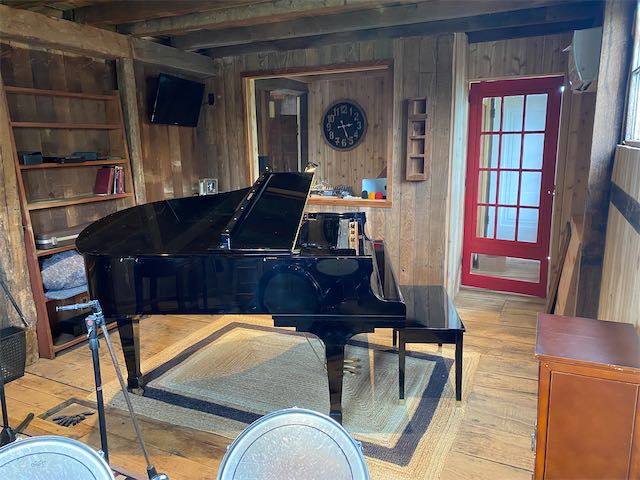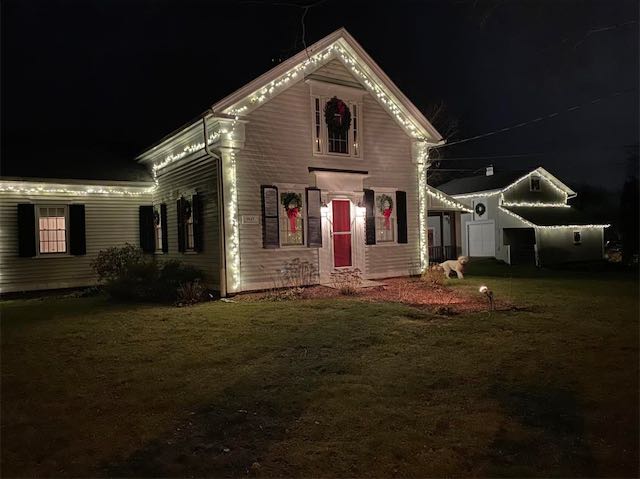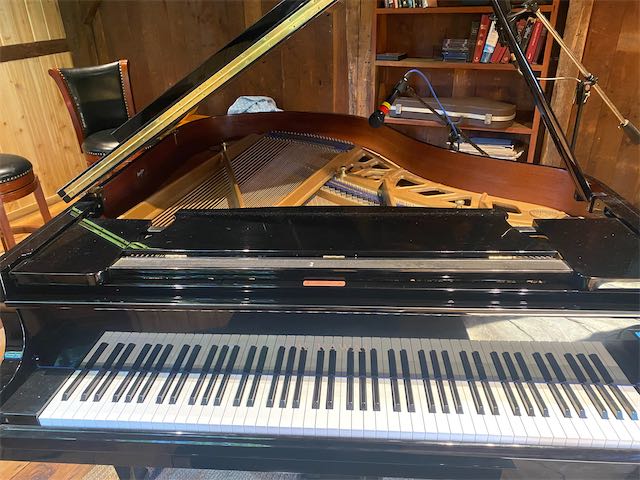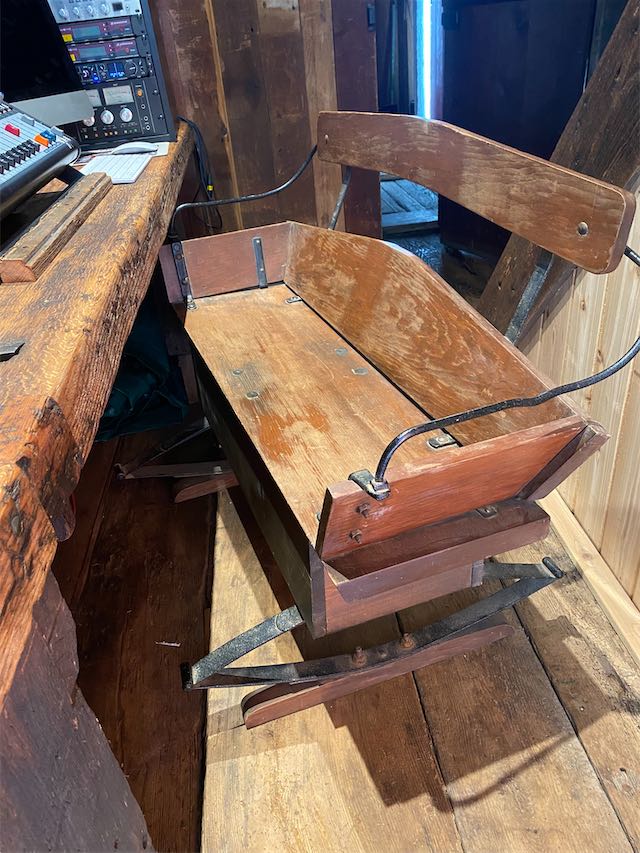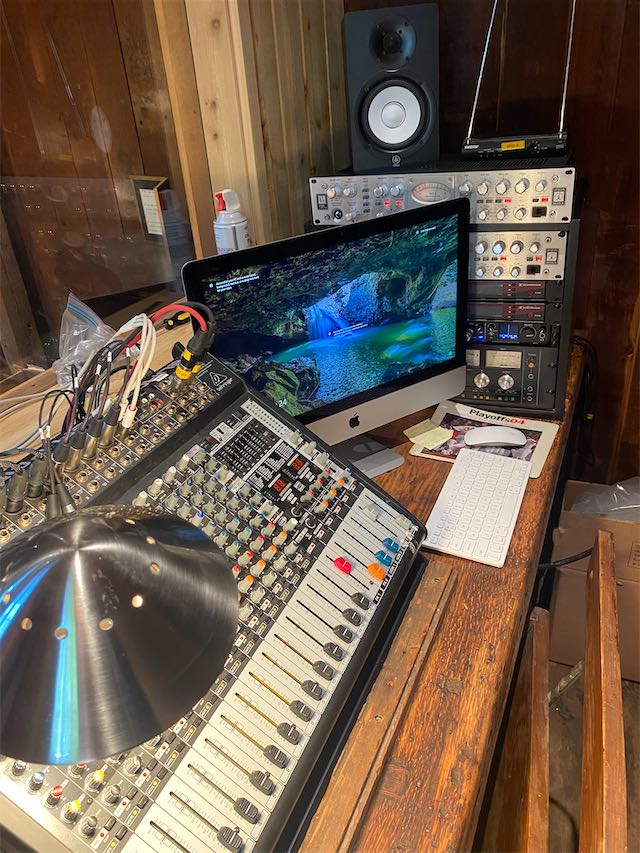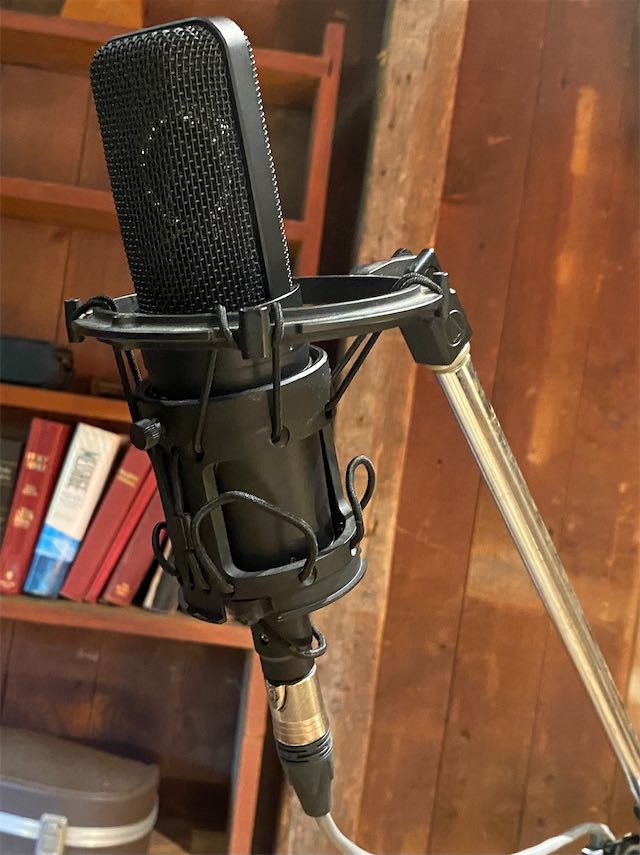Red Door Studios began as a storage facility for my grand piano. Lyn and I had always wanted to live in an older home, but after 40 years and 5 houses, we had never done so.
We were discussing our new home with our children, Kimberly and Erik. “You can’t sell the piano!” So, what to do? Erik asked “so what are you going to do with the barn?” I dunno. “So build a studio!”
The studio desk is a single, 4-inch thick slab of chestnut, 10 feet long by 2 feet wide which served as a workbench in the sawmill.
When we found this 1846 farmhouse near the center of Manchester, we found that the smallish rooms would not accommodate my piano. We loved the historic property, and so we were resigned to selling the grand in favor of a small upright that would fit in the dining room.
And so, over a year or so plans developed for a recording studio and a small audience performance space in the loft.
The barn, built of almost 100% chestnut so plentiful in the mid 1800’s, sits just west of the fully restored farmhouse. Rustic, hand-hewn post and beam construction harkens back to simpler times. Various relics from the building’s history (it served as a sawmill for the early 1900’s) decorate the walls.
In the Loft, a lantern which once lit the driveway now lights the seating area. Holes once accommodating homing pigeons (we think) line the wall behind the performers. A bench from a buckboard wagon serves the keyboardist. This is an intimate, magical space.
Welcome to Red Door Studios and The Loft at Red Door Studios.
Recording equipment includes Sennheiser wireless mics, AudioTechnica recording mic, two matching Avalon tube pre-amps, Motu digital converter, MAC desk top computer, 16 channel Behringer mixer and Kawaii 5’9” grand piano.
